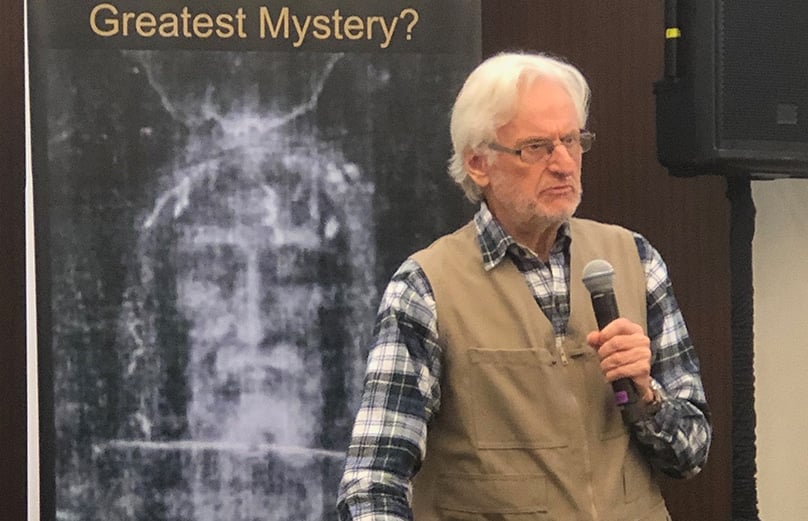
By Christopher Gunty
Are you looking to make an easy $1 million? All you have to do is recreate a photographic negative image of an apparently crucified man on a 14-foot-by-3-foot piece of linen. And it has to have holographic features, so that when it is rendered as a three-dimensional profile based on the intensity of the shading, it should produce an accurately contoured 3-D image of a human form.
Oh, and—other than the linen, which will be provided—it all has to be done using only materials and methods that would have been available in medieval times, specifically between 1260AD and 1390AD.
Maybe it’s not an easy million bucks after all.
That’s the challenge from David Rolfe, a British documentary film producer and researcher on the Shroud of Turin. He first announced the challenge to the British Museum in his 2022 documentary, “Who Can He Be?”
The British Museum supervised a carbon-14 dating of the Shroud of Turin in 1988, with a few labs from around the world. That testing pronounced that the shroud was not the genuine burial cloth of Christ, as many believe, because the testing showed it to be produced in the 13th or 14th century.
However, since then, many researchers have noted that the testing was flawed. Rolfe notes that carbon dating was new at the time, with only seven labs in the world capable of the work. Any lab that got approval to work on the shroud would benefit from the publicity.
In Washington at a presentation after the National Catholic Prayer Breakfast on 8 February, Rolfe said that the labs agreed on a protocol which would include taking samples from several different parts of the cloth for scientific accuracy. However, when it came time to take the samples, the custodian of the shroud, not wanting to harm its integrity, said a single sample should be taken from a corner of the cloth that showed signs of wear. One small sample from that area was divided into three samples for the labs to use.
The determination that the shroud had been created by a forger in medieval times, meant that “the shroud went from hero to zero,” Rolfe said. But Rolfe added that the sampling created several problems. Engravings from centuries past show people holding the shroud for display, clutching the corners. People want a closeness to holy relics, he said, and “the tighter you grip it, the more benefit you get.” This introduced medieval pollutants to the cloth. He said restorers were very good at fixing important cloths and tapestries, to the point of repairs being nearly invisible.
If, as museum officials said in 1988, some resourceful artist in the 1200s “faked it and flogged it off,” then Rolfe and other shroud enthusiasts claim it should be reproducible, including the unique characteristics that show the image of a man on the cloth does not contain any paint, ink, dye, stain or pigments, and that there is no image underneath the blood stains.
After almost two years of no response from the British Museum, the challenge is being extended to the United States by the National Shroud of Turin Exhibit, a group hoping to create a permanent museum space “in a city of museums” for a shroud replica and education, according to Myra Adams, executive director. The group currently has a mini-exhibit featuring an actual-size photographic replica of the shroud on display at the Catholic Information Centre in Washington through the end of February.
The group announced the expanded challenge on 8 February. Any person, organisation or institution in the US can apply to undertake the $1 Million Challenge to create the image of a crucified man that appears on the linen shroud. Up to three applicants will be accepted, each of which will receive three pieces of linen the same size as the shroud as the base for the recreation.
Rolfe said that many media outlets, especially in Britain, ran stories about the initial challenge to the British Museum, but none have followed up to find out if the museum has taken up the task, and if not, “Why is it leaving a million dollars on the table?”
A donor who helped Rolfe finance his 2022 documentary also agreed to put up the money for the prize. The same donor agreed to cover the US prize, if anyone succeeds. “He thinks his money is safe,” Rolfe said.
Christopher Gunty is associate publisher and editor of Catholic Review Media, the publishing arm of the Archdiocese of Baltimore.
